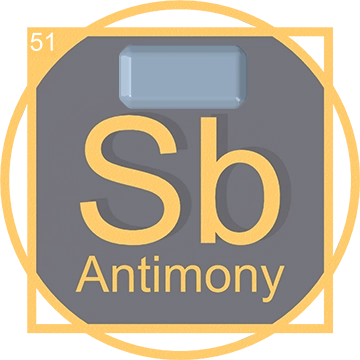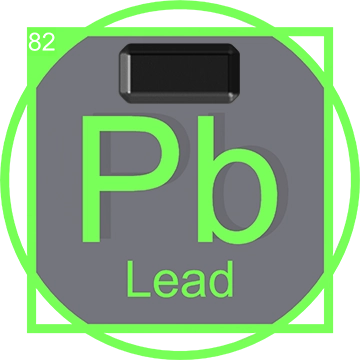Antimony (Sb): A Versatile Element with Pivotal Applications
Introduction
Antimony, known by the chemical symbol Sb, is a lustrous gray metalloid with both metallic and non-metallic properties, making it uniquely versatile for various industrial applications. This article delves into the history, properties, and significant applications of Antimony, underscoring its importance in modern technology and industry.
Discovery of Antimony

Records of Antimony usage date back to ancient times. It was first recognized as an element by early chemists in the 17th century. The metalloid was distinctly identified and described in its metallic form by Nicolas Lémery in 1707. The name 'Antimony' is derived from the Greek words 'anti' and 'monos', meaning 'a metal not found alone', hinting at its common natural occurrence as a compound rather than a pure element.
Antimony in the Periodic Table
Located in group 15 of the periodic table, Antimony is often associated with nitrogen, phosphorus, arsenic, and bismuth. It exhibits properties typical of both metals and non-metals, making it a metalloid. Antimony's ability to form various allotropes and its diverse chemical behavior under different conditions reflect its complexity and utility. Learn more about Antimony’s placement and its characteristics in the periodic table.
Physical and Chemical Properties of Pure Antimony

Pure Antimony is recognized for its brittle texture and shiny silver-white appearance. It is resistant to attack by acids and other chemicals, making it durable and suitable for use in harsh environments. Its thermal conductivity is lower than that of other metals, which allows Pure Antimony to be used in products that require insulation from heat, demonstrating its versatility in various industrial applications.
Applications and Technological Uses

The applications of Antimony are extensive and varied, showcasing its versatility across multiple industries:
- Flame Retardants: Compounds of Antimony, such as antimony trioxide, are used extensively in flame retardants. These compounds are vital in enhancing the fire-resistant properties of household goods including textiles, plastics, and building materials, making environments safer by slowing down the spread of flames in case of fire.
- Alloys: Antimony is crucial in metallurgy, used to increase the hardness and mechanical strength of metals. Alloys of Antimony, including lead-antimony plates in batteries, are important in the production of automotive batteries, small arms, bullets, and cable sheathing, reflecting its impact on both everyday and specialized equipment.
- Electronics: In the semiconductor industry, Antimony is used to manufacture various components such as diodes, infrared detectors, and Hall-effect devices. Its semiconducting properties make it suitable for use in devices that require precise control of electrical properties.
- Medicine: Antimony compounds have been historically used for therapeutic purposes, particularly in the treatment of parasitic infections like leishmaniasis. These compounds are valued in tropical medicine for their efficacy in treating challenging diseases.
- Glass Manufacturing: In the glass manufacturing industry, Antimony oxide serves as a clarifying agent to remove bubbles and improve the transparency and brightness of glass. This use is critical in producing high-quality glass for consumer electronics, automotive, and architectural applications.
Production of Antimony
Antimony is primarily obtained from the mineral stibnite (antimony sulfide). The process typically involves the following steps:
- Mining and Extraction: Stibnite ore is mined and then either concentrated in the ore processing phase or directly smelted into antimony trioxide.
- Roasting: The concentrated ore is heated in the presence of air to convert it into antimony oxide (antimony trioxide).
- Reduction: Antimony oxide is then reduced with carbon to obtain metallic antimony.
Key Mining Locations and Associated Resources
Antimony is mined worldwide, primarily in China, which dominates the global production. Other significant producers include Russia, Bolivia, and Tajikistan. Here are a few notable mines:
- Xikuangshan Mine (China) - the largest antimony mine.
- Sarylakh-Surma and Zvezda Mines (Russia).
- San Jose Mine (Bolivia).
Common resources found alongside antimony in these locations include:
Modern Uses of Antimony

Today, antimony is widely used in various applications, including:
- Flame Retardants: As compounds in the manufacture of flame-resistant materials.
- Lead-Acid Batteries: As an alloying agent to enhance the strength and chargeability.
- Plastics, Ceramics, and Glass: As a catalyst in the production of polyethylene terephthalate (PET) and as a clarifying agent in glassmaking.
Future Prospects of Antimony

Scientific advancements and technological innovation could drive new uses for antimony. Potential future applications include:
- Advanced Electronics: Utilization in semiconductors for high-performance computing devices.
- Renewable Energy: As an element in photovoltaic materials for solar cells, enhancing efficiency and stability.
- Medical Applications: Research into antimony-based drugs for treating tropical diseases could expand, subject to overcoming toxicity challenges.
The exploration of antimony's properties and potential applications in high-tech industries suggests a promising future, contingent on sustainable and environmentally conscious mining practices. The ongoing research in materials science could unlock new roles for antimony in emerging technologies, making it an even more critical resource in the modern era.














